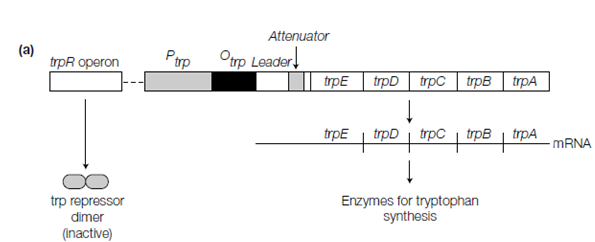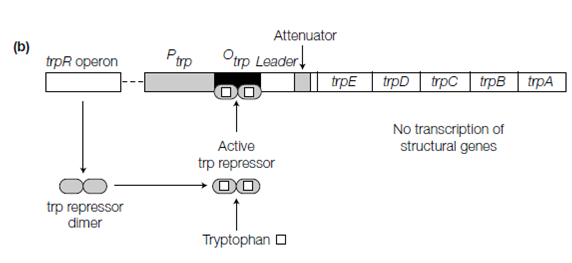trp repressor:
In the absence of tryptophan shown in the figure, a trp repressor protein encoded through a separate operon, trpR that is synthesized and forms a dimer. Moreover, this is inactive and so is unable to bind to the trp operator and the structural genes of the trp operon are transcribed. When tryptophan is present in the figure, the enzymes for tryptophan biosynthesis are not required and so expression of these genes is turned off. This is achieved through tryptophan binding to the repressor to activate it so which it now stops transcription and binds to the operator of the structural genes. In the role tryptophan is said to be a co-repressor. This is negative control, since the bound repressor prevents transcription, but note in which the lac operon and trp operon show two pathways in that negative control can be achieved; either as in the lac operon through having an active bound repressor which is inactivated through a bound ligand (the inducer) or (as in the trp operon) through having a repressor which is inactive commonly but activated through binding the ligand. As per the case of lac operator the core binding site for the trp repressor in the trp operator is palindromic.


Figure: Regulation of the trp operon (a) transcription in the absence of tryptophan (b) no transcription in the presence of tryptophan.